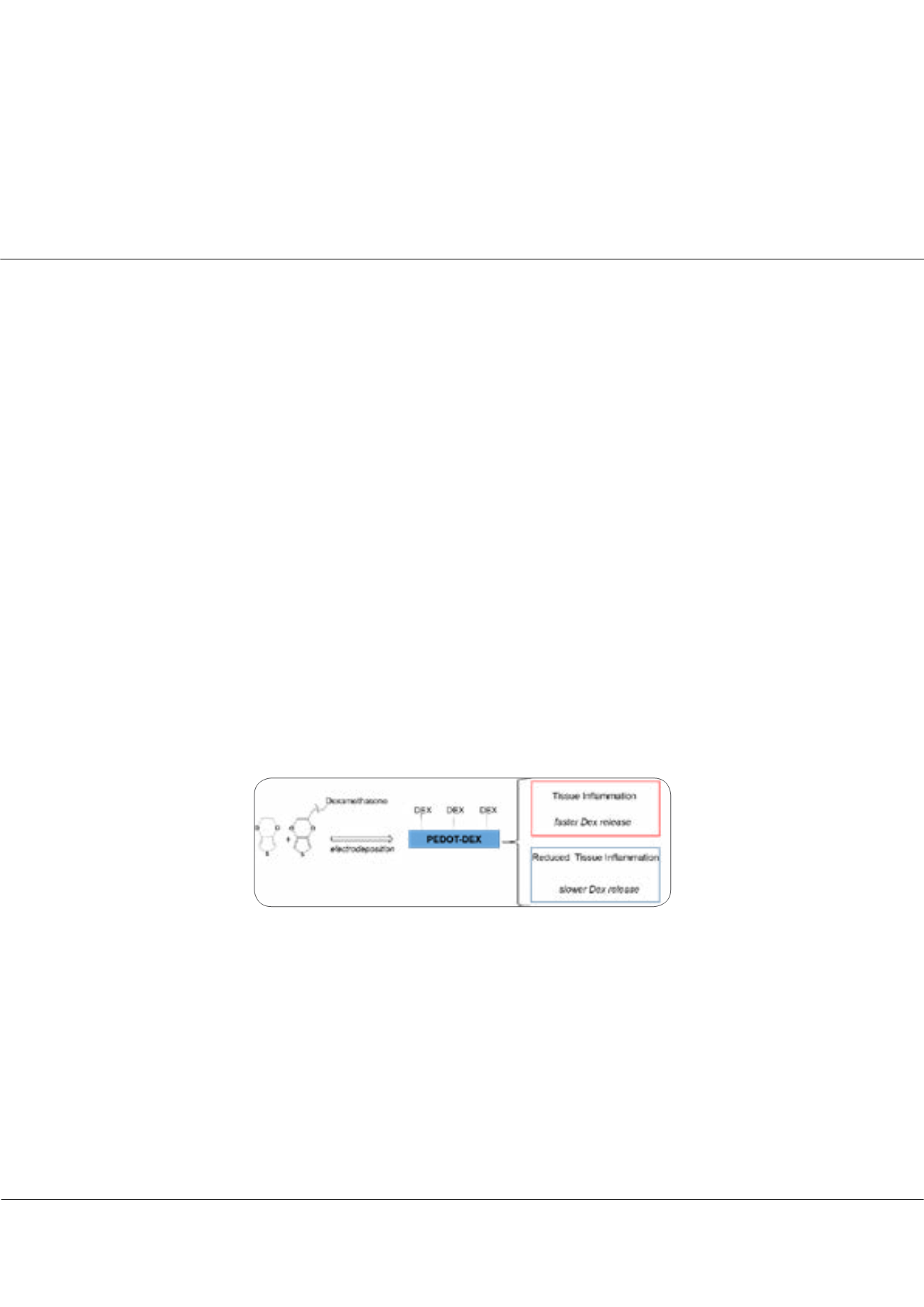

Page 55
conferenceseries
.com
Volume 7
Biosensors Journal
ISSN: 2090-4967
Electrochemistry 2018
June 11-12, 2018
June 11-12, 2018 | Rome, Italy
4
th
International Conference on
Electrochemistry
New poly(3,4-ethylenedioxythiophene) coatings for neural recording and stimulation
Stefano Carli
1
, Andrea Armirotti
1
, Davide Ricci
1
, Claudio Trapella
2
and
Luciano Fadiga
1
1
Italian Institute of Technology, Italy
2
University of Ferrara, Italy
Statement of the Problem:
The development of implantable neural microelectrodes has revolutionized the field of biomedical
applications by enabling bidirectional communication with the nervous system at high resolution. Unfortunately, one of the
main concerns related to chronically implanted neural microelectrodes is related to the adverse reaction of the surrounding
tissue, which is known to encapsulate the neural microelectrodes after few weeks post implantation, leading to significant
worsening of recording/stimulation quality. Among various approaches aimed to minimize inflammatory reaction and gliosis
while preserving the electrochemical integrity of microelectrodes, the possibility of delivering anti-inflammatory drugs
from the surface of neural implants represents a challenging strategy. For this purpose, the conductive polymer poly(3,4-
ethylenedioxythiophene) (PEDOT), is commonly electrodeposited onto the microelectrodes in conjunction with the negatively
charged dexamethasone sodiumphosphate (Dex-P). Following this methodology, the drug release can be promoted by applying
a cathodic trigger that reduces PEDOT to its neutral state, while enabling the free diffusion of the drug. Unfortunately, the
inclusion of Dex-P as a dopant has been reported to negatively affect both electrochemical properties and stability of PEDOT
coatings.
Methodology & Theoretical Orientation:
In this study, for the first time, the anti-inflammatory drug dexamethasone (Dex)
was chemically anchored to the surface of electrodeposited PEDOT, thereby enabling the drug release upon the hydrolysis of
the chemical bond between Dex and the PEDOT film. This approach would account for a self-adjusting release system that
promotes the delivery of the drug by local changes in the biologic environment.
Conclusion & Significance:
The big challenge of this study was to realize self-adjusting release of drugs by neural implants, as
a consequence of post implantation inflammatory biological triggers. Here we found that the covalent bond between Dex and
PEDOT composite coatings can account for a biologically controlled drug release system.
Recent Publications
1. Cogan S F (2008) Neural stimulation and recording electrodes. Annual Review of Biomedical Engineering 10:275–309.
2. Williams J C, Hippensteel J A et al. (2007) Complex impedance spectroscopy for monitoring tissue responses to inserted
neural implants. Journal of Neural Engineering 4:410-423.
3. Castagnola E, Carli S et al. (2017) Multi-layer PEDOT-dexamethasone and PEDOT-PSS-CNT coatings on glassy carbon
microelectrode arrays for controlled drug release. Biointerphases 12:031002.
4. Boehler C M and Asplund M (2015) A detailed insight into drug delivery from PEDOT based on analytical methods:
Effects and side effects. Journal of Biomedical Materials Research Part A 103(3):1200-1207.
5. Goding J A, Gilmour A D et al. (2015) Small bioactive molecules as dual functional co-dopants for conducting polymers.
Journal of Materials Chemistry B 3:5058-5069.
Stefano Carli et al., Biosens J 2018, Volume 7
DOI: 10.4172/2090-4967-C1-002
















